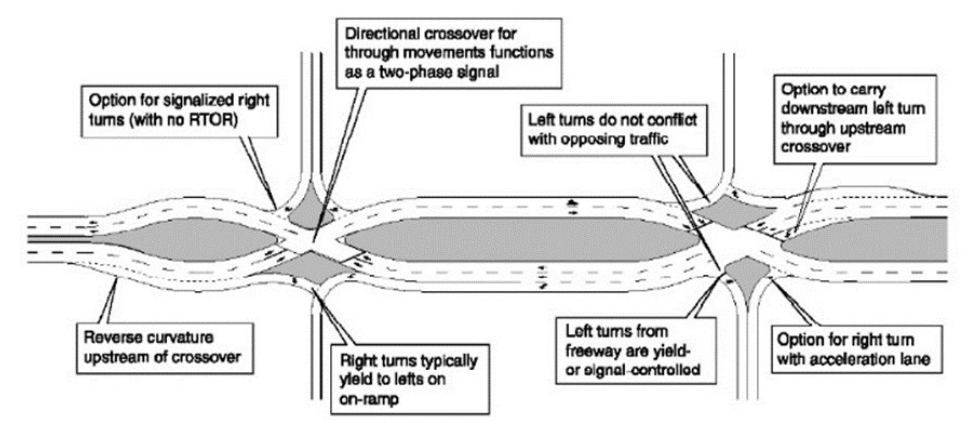14.10.1 Overview
The Diverging Diamond Interchange (DDI) is an interchange form where the two directions of traffic on the crossroad temporarily divide and cross to the opposite side to gain access to and from the freeway frontage roads more efficiently. The primary difference between a DDI and a conventional interchange is the design of directional crossovers on either side of the interchange. This eliminates the need for left-turning vehicles to cross the path of approaching vehicles. By shifting cross street traffic to the left side of the street between the signalized crossovers, vehicles on the crossroad making a left-turn on to or off of ramps, or frontage roads, do not conflict with vehicles approaching from other directions. TxDOT has adopted the
as the primary source for DDI guidelines.
depicts a schematic concept of the DDI Interchange configuration.
.png/_jcr_content/renditions/original)
Figure 14-38: Diverging Diamond Interchange Concpet (DDI)
Source: Virginia DOT, used by permission
The information contained in this section is considered a companion to the FHWA Guide and is intended to document TxDOT’s suggested approach to DDI design.
Documented benefits of a DDI include:
- Capacity improvements with two-phase signal configurations;
- Safety improvements due to a reduction in the number of conflict points; and
- Possible lower costs due to a smaller footprint, shorter construction time, and the possibility of being able to salvage existing bridge structures.
Conditions where a DDI may not be suitable include:
- Densely developed areas –DDI’s can restrict access to existing developments due to the crossovers near the interchange; and
- Inadequate driver familiarity –DDI’s require public involvement and education as well as significant signage to assist drivers navigating the interchange.
shows the design characteristics and key features of the DDI.

Figure 14-39: Key Characteristics of a DDI
Source: FHWA DDI Informational Guide